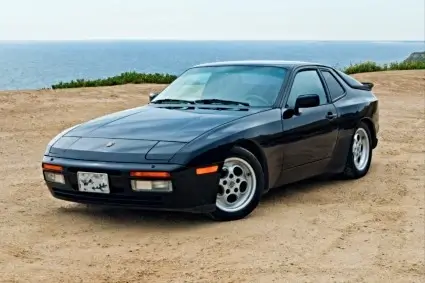Porsche Tyres
Classic Porsche Tyres
On the following pages, Longstone Classic Tyres give classic tyre fitment recommendations for Porsche cars.
If your car is not listed, don't panic! Please give us a call on:
01302 711 123
or
Email: sales@longstonetyres.co.uk
Vintage Porsche tyres
Longstone Tyres have an extensive range of classic Porsche tyres which is growing further with the introduction of more classic Porsche tyres from the PIRELLI CINTURATO ™; range, not to mention the excellent classic Porsche tires made by Michelin.
Classic Porsche Tyre Recommendation
Porsche Tyres
Classic Porsche tyres are well supported, with Porsche themselves getting involved in homologating tyres such as the Pirelli CN36 and the famous PIRELLI CINTURATO ™ P7, offering some original equipment classic Porsche tyres is sizes that would otherwise be difficult to obtain. It is excellent that we can now get and 215/60 VR15 PIRELLI CINTURATO CN36 N for the 2.7 911 RSR and 205/50 VR 15 PIRELLI CINTURATO P7 and 225/50 VR 15 PIRELLI CINTURATO P7 for the Porsche 930 and 911 Carrera cars.


Porsche 911 Through The Years
Porsche History
In 1931, Ferdinand Porsche co-founded "Dr. Ing. h. c. F. Porsche GmbH" with Adolf Rosenberger and Anton Pich. The headquarters were located at Kronenstraße 24 in the heart of Stuttgart. Originally, the company offered motor vehicle development and consulting services but did not produce cars under its own name. The design of a middle-class automobile for Wanderer was their first project. Other designs were commissioned after that. As the company evolved, Porsche chose to concentrate on his own design, which was a continuation of the compact vehicle idea he had developed while working at Daimler-Benz in Stuttgart.
The German government gave the fledgling business one of its first assignments: develop an automobile for the people, i.e. a Volkswagen. This culminated in the Volkswagen Beetle, which went on to become one of the most successful automobile designs of all time. The Porsche 64 was created in 1939 utilising several components from the Volkswagen Beetle. During WWII, Volkswagen manufacture shifted to the Kübelwagen, a military variant of the Volkswagen Beetle.

Ferdinand Porsche’s first iconic vehicle was not under his own marque, but what we all know as “The People’s Car”. His innovation was the Volkswagen Beetle, which served as a launching pad to a racing career that included the 911 as a centrepiece. World War II changed things and the man was ousted from the Volkswagen company, forcing him and his son to form their own car company, Porsche was born. Ferdinand was arrested for war crimes on December 15th 1945, although he was never convicted. During his 20-month prison sentence, Ferdinand Porsche's son, Ferry Porsche, decided to create his own automobile since he couldn't locate one that he liked. He also had to guide the firm through some of its most trying times until his father's release in August 1947. The earliest prototypes of the 356 were produced at a tiny sawmill in Gmünd, Austria.
The 356 was their first hit. Despite having only 40 hp on a rear-mounted, somewhat beefed-up Beetle engine, the first Porsche immediately created a name for itself with nimble handling as well as traits nearly unheard of in sportscars at the time, namely comfort and durability. In the mid-1950s, Porsche launched its own engines, as well as more powerful variants of the 356. Following the 356 was the Porsche 911, a modern-day automotive legend. The rear-engine 911 was ahead of its time when it was launched in 1964, and it has continued to improve since then to become what many believe to be the ideal sports vehicle. Porsche's brand logo is based on the coat of arms of the Weimar Republic's Free People's State of Württemberg, which had Stuttgart as its capital from 1918 until 1933.

Starting with the four-cylinder 924 in 1976 and the unrelated 928 powered by the company's first V-8 engine, Porsche launched a succession of front-engine cars in the 1970s. The 924 was followed by the more powerful and sophisticated 944 and 944 Turbo, and then, in the early 1990s, the 968. Porsche discontinued the 968 and 928 in 1995 to concentrate on the production of the rear-engined 911 as well as the mid-engined Boxster. Porsche is also closely linked with racing, and Porsche vehicles began participating almost immediately after its inception. Porsche automobiles have won an estimated 24,000 auto races worldwide, notably, more than 50 class victories at Le Mans. This racing success has helped lead to people talking about Porsche with veneration.
Following porsche's convertion from Kommanditgesellschaft (KG), or limited partnership, to Aktiengesellschaft (AG), or public limited company, in 1972. Ernst Fuhrmann, who had previously worked in the company's engine development section, was the company's first chief executive officer (CEO). Fuhrmann was the designer of the so-called Fuhrmann-engine, which was utilised in the 356 Carrera models as well as the 550 Spyder and had four overhead camshafts rather than a central camshaft with pushrods as in the Volkswagen-derived serial engines. During the 1970s, he intended to discontinue the 911 and replace it with the V8-front-engined 928. As we now know, the 911 outlasted the 928 by a long shot.
In recent decades Porsche has remained a major participant in the automobile business, maintaining its legendary position and reputation for producing technologically complex yet enjoyable sports cars, branching out into luxury SUVs and pushing the frontiers of modern supercars in recent decades.



